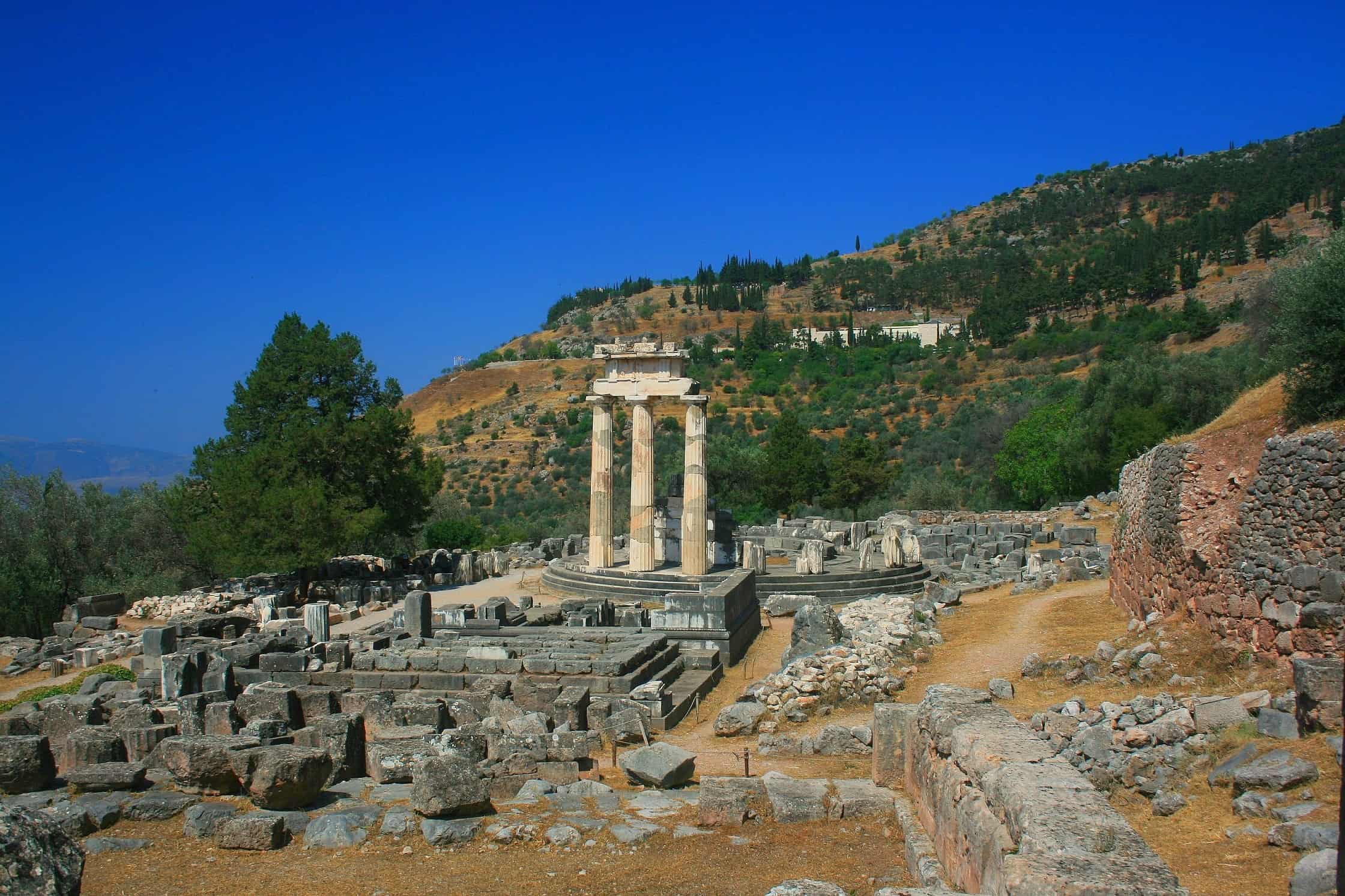Due to the unique geographical location of Greece, located almost in the centre of the world, the country has functioned as something akin to the crossroads of civilization. Greek civilizations have left their mark everywhere, from settlements, architecture, food and culture that have all lead to a world-wide fascination with the country. For those that want to experience the pinnacle of Greek achievement through its natural landscape, ancient culture and architecture, it is best displayed through its abundance of UNESCO World Heritage Sites.
Archeological Site of Delphi
 https://www.flickr.com/photos/navin75/
https://www.flickr.com/photos/navin75/
Located in the centre of Greece is the ancient area of Delphi, today it is an informative archeological site, but in ancient times this city was home to an important oracle. This oracle has been referenced in everything from Greek history to its ancient myths. Pilgrims from all over the Mediterranean would journey to this area that once held the Temple of Apollo and the oracle within to ask for prophecy on issues that weighed on their minds. While many known Delphi for its oracle, the city itself also played an important political role as a union between the different autonomous city-states of ancient Greece. Today, visitors can tour the ruins of Delphi and explore the artifacts that the archeologists have dug up in the nearby Museum of Delphi.
Medieval City of Rhodes
 https://www.flickr.com/photos/raphael_nolens/
https://www.flickr.com/photos/raphael_nolens/
Although Rhodes was one of the first settlements in Greece, it was eventually sacked and faced ruin by the hands of the Romans. The Medieval City of Rhodes that visitors will see today was reconstructed by the Knight Order of Saint John of Jerusalem that occupied this Greek island from 1309 to 1523. The occupation of the town was followed by the Ottomans and later the Italians, who both left their mark on this town. While sadly very little of its ancient Greek origins remain, visitors can enjoy distinctive samples of Gothic architecture left by the Knights in locations such as Upper Town, the Palace of the Grand Masters and the Great Hospital. In Lower Town, visitors can tour the buildings of Ottoman influence such as mosques and public bathes while the modern Italian influences are not quite so easy to pluck out. Regardless of which culture draws visitors to Rhodes today, they can revel in standing in one of the oldest cities in the world, even if the original is buried underneath the current.
Delos
 https://www.flickr.com/photos/chrisjohnbeckett/
https://www.flickr.com/photos/chrisjohnbeckett/
In Greek mythology, Delos was the island where the god Apollo was born after his mother Leto laboured for ten days and nights before birthing his twin sister Artemis who served as midwife to her mother in order to bring forth Apollo. Strangely, this entire island was dedicated to not his mother or sister, but the god Apollo himself, with pilgrims from all over the Mediterranean coming to pay tribute to him. In ancient times, the towns on Delos flourished and, like Delphi, served as a unification point between the City-States. However, today the island is now uninhabited by people save for archeologists and museum staff. It has since been turned into an archeological site that houses a small museum of artifacts, but it is the monuments that were built to honour Apollo that are the major draw to visitors that venture to Delos.
Old Town of Corfu
 https://www.flickr.com/photos/64021067@N02/
https://www.flickr.com/photos/64021067@N02/
Only added in 2007, Corfu is one of the newest additions to the UNESCO World Heritage Sites in Greece. This fortress town features strong Venetian influence in its architecture and primarily functioned to protect the island from pirates and invasion forces in the country's Medieval Era. Although a UNESCO site, it is still very much a function city, albeit beautifully unblemished by modern architecture styles. The Old Town district of Corfu features towering two-to-three story buildings with no balconies and paved paths that look out over the sea. It features Spianada Square, the second largest square in Europe and Lisbon Street which runs through Old Town and is truly like stepping back in time.
Paleochristian and Byzantine Monuments of Thessaloniki
 https://www.flickr.com/photos/prof_richard/
https://www.flickr.com/photos/prof_richard/
For several centuries in the ancient era, Thessaloniki was the second most important settlement in the Byzantine Empire and played an integral role in spreading Christianity throughout the Balkans. As time went on, many religious groups settled in Thessaloniki and built churches and monuments throughout the Middle Ages. It is this eclectic collection of well-preserved religious buildings that earned Thessaloniki its place on the UNESCO World Heritage List in Greece. Churches such as the church of Saint Demetrius, the church of Panagia Helkeon, the church of Saint Nicholas Orfanos, the Rotonda of Saint George and the Byzantine Walls of Thessaloniki makes this a town seeped in history from throughout the ages. Visitors can plainly see that even upon entering the city where an abundance of different architectural style shine throughout the town itself.


